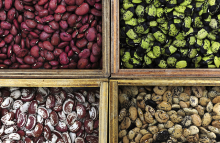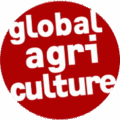
Wild relatives of vital food crops, which have useful traits that could help farmers adapt to climate change, are poorly represented in seed banks, new research shows. In a paper, published in the journal Nature Plants on March 21, an international team of scientists warns that more needs to be done to collect and conserve wild relatives of plants for future generations. “The world’s food supply is in a precarious position of depending on too few crop plant species,” said co-author Colin Khoury, a scientist at the International Center for Tropical Agriculture. The researchers mapped more than 1,000 crop wild relatives of 81 essential food crops, and found that for 29.1% of total taxa associated with 63 crops, no samples exist, and a further 23.9% of crop wild relatives are represented by fewer than ten accessions in gene banks. According to the study, more than 70% of wild plants considered high priority for collection are underrepresented in gene banks. These included the gene pools of crops important for agricultural production, for example sugarcane, sugar beet and maize as well as important regional staple crops, such as banana and plantain, cassava, sorghum, yams and cowpea. High priority was also assigned to the gene pools of crops important for smallholder income generation in the tropics (for example, cacao and papaya) and minor crops increasing in popularity because of their nutritional qualities such as quinoa. “Over the history of agriculture – from Neolithic times onwards – farmers have been whittling down the diversity available in wild plants to focus on a particular subset of that diversity that we call the domesticated crop,” explained co-author Luigi Guarino, director of science and programs at the Global Crop Diversity Trust. “This domesticated crop is just a selection from a much wider diversity of genes, traits and adaptations that are out there still in the ancestors and relatives of the crops we use today,” he added. The wild relatives of domesticated crops possess characteristics such as drought and heat tolerance or increased pest and disease resistance that could be used for breeding more resilient crop varieties. But there are lots of threats to genetic diversity, such as land-use change, urbanisation, deforestation and climate change itself. The assessment also shows that over 95% of crop wild relatives are insufficiently represented in regard to the full range of geographic and ecological variation in their native distributions. The most critical collecting gaps occur in the Mediterranean and the Near East, western and southern Europe, Southeast and East Asia, and South America. The scientists conclude that a systematic effort is needed to improve the conservation and availability of crop wild relatives. But they stressed that it is also important to conserve this diversity in nature itself, allowing it to continue evolving. “This is difficult to do, especially under climate change which is already causing movement of species polewards and to higher elevations,” Luigi Guarino told BBC. (ab)
